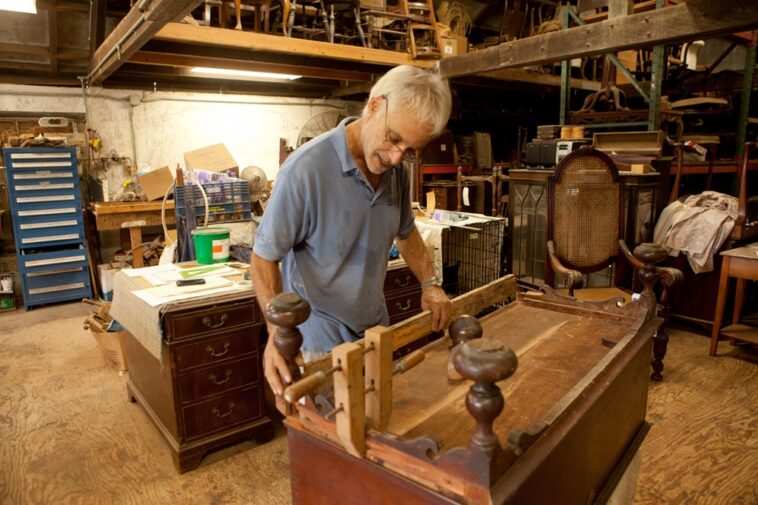Antique restoration is a captivating endeavor that allows us to breathe new life into cherished objects from the past. These artifacts hold historical significance, cultural value, and sentimental attachments, making their preservation crucial. Through restoration, we can safeguard our heritage and ensure that future generations can appreciate the beauty and craftsmanship of bygone eras.
Whether it’s a vintage chair, a delicate painting, or an intricate silver tea set, restoring these treasures requires knowledge, skill, and a deep understanding of preservation techniques. In this article, we will explore the key steps and techniques for successful antique restoration.
Assessing the condition: Key steps in evaluating antique restoration needs
Before embarking on any restoration project, it is essential to assess the condition of the antique thoroughly. Start by examining the object for any visible damage, such as cracks, missing parts, or weakened joints. Take note of the overall structural stability and any signs of deterioration. It’s also important to consider the object’s historical value and originality. Consulting with experts or appraisers, including those specializing in restoration hardware, can provide valuable insights into the item’s significance and guide the restoration process.
Cleaning and preservation: Techniques for maintaining the original appearance
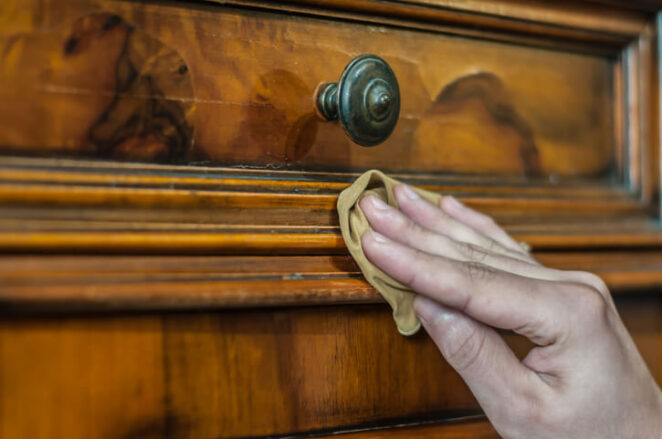
Cleaning and preservation are fundamental aspects of antique repair. However, it is crucial to proceed with caution to avoid causing further damage. Begin by removing surface dirt and grime using soft brushes, microfiber cloths, or gentle vacuuming techniques. For delicate materials such as textiles, consult a professional conservator to ensure proper cleaning methods are employed. When it comes to preserving the original appearance, avoid using harsh chemicals or abrasive materials that can strip away the patina or damage delicate surfaces. Instead, opt for conservation-grade products that gently remove tarnishes and protect the antique’s integrity.
Repairing structural damage: Addressing cracks, breaks, and weak joints
Structural damage is a common issue with antique objects, especially furniture. Repairing cracks, breaks, and weak joints requires careful attention to detail. Start by cleaning the damaged area and removing any loose debris. Depending on the material, techniques such as gluing, clamping, or patching may be used to restore stability. For complex repairs or valuable pieces, it is advisable to seek professional assistance. Skilled restorers have the expertise to perform intricate repairs, ensuring that the object retains its structural integrity while minimizing visible signs of rehabilitation.
Wood restoration: Tips for reviving and refinishing antique wooden furniture
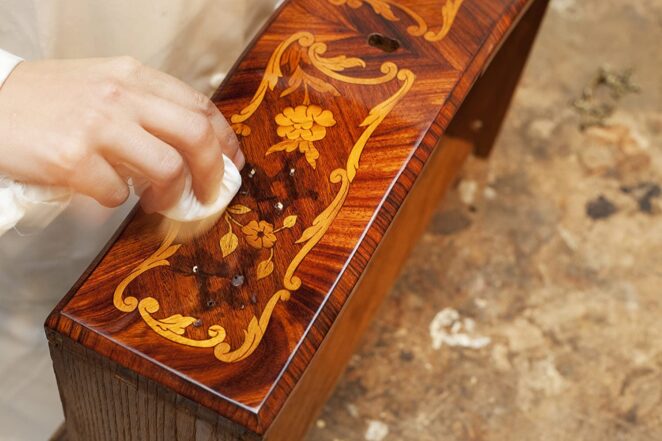
Antique wooden furniture often requires specialized repair techniques to bring back its original beauty. Begin by cleaning the surface using mild soap and water, followed by gentle sanding to remove blemishes and scratches. When refinishing, it is essential to match the original finish as closely as possible. This can be achieved by using traditional techniques like French polishing or applying a suitable wood stain. Pay attention to the climate and humidity levels, as they can affect the wood’s condition.
Techniques for removing rust and polishing metal surfaces
Restoring antique metalwork involves reviving its luster and protecting it from corrosion. Start by removing any rust or corrosion using a gentle abrasive, such as a wire brush or fine steel wool. Be cautious not to scratch or damage the metal surface during this process. Afterward, apply a metal polish or wax to protect the metal and enhance its shine. For intricate or valuable metal objects, it is recommended to consult a professional restorer with experience in working with various metals and finishes. Their expertise ensures that the restoration process is executed flawlessly, preserving the metal’s original beauty.
Upholstery repair: Restoring antique fabric and cushions to their former glory
Antique upholstery requires careful attention to detail to revive the fabric’s original charm. Start by gently vacuuming or brushing away surface dirt. For minor repairs, such as loose seams or small tears, use a fine needle and thread to mend the fabric. When dealing with delicate or valuable upholstery, it is advisable to consult a professional conservator or upholsterer who specializes in antique repair. They possess the necessary skills and knowledge to repair and replace the damaged fabric, ensuring the piece retains its authenticity and historical integrity.
Dealing with tarnish: Strategies for restoring shine to antique silver and brass
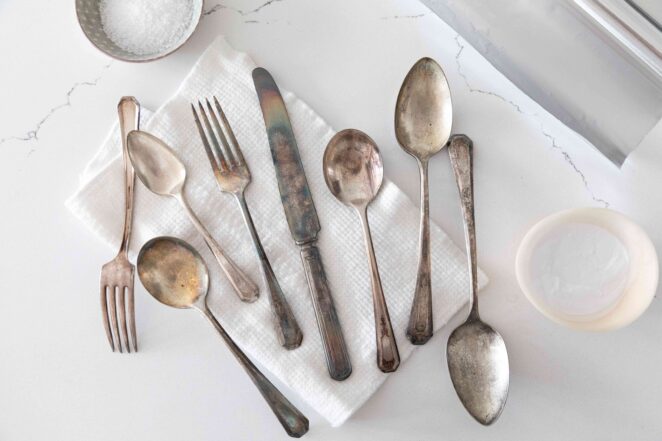
Antique silver and brass pieces often develop tarnish over time, diminishing their natural shine. To restore their luster, start by cleaning the metal using a mild soap and warm water solution. For stubborn tarnish, gentle polishing with a specialized silver or brass cleaner can be effective. Take care not to scrub too vigorously, as this may remove the patina that adds character to the piece. Once cleaned, use a soft cloth to buff the metal to a brilliant shine.
Preserving and repairing antique paintings and frames
Restoring antique paintings and frames requires delicate handling and expertise. It is crucial to entrust such tasks to professional art conservators who specialize in artwork rehabilitation. They possess the knowledge and skills to clean, repair, and stabilize paintings without compromising their originality or historical value. Art conservators use specialized techniques to remove dirt, grime, and discolored varnish layers from paintings, revealing their true beauty. Additionally, they can repair tears, retouch damaged areas, and stabilize fragile frames.
Conservation ethics: Exploring the balance between restoration and preservation
When it comes to antique restoration, a delicate balance between restoration and preservation must be struck. While repair aims to revive and repair an object, preservation focuses on maintaining its original condition and historical integrity. It is essential to consider the significance of the item, its historical context, and the intentions of the original creator. Restoration should be approached with care, ensuring that any interventions are reversible and do not compromise the authenticity of the object.
Professional restoration services: Choosing the right experts for intricate projects
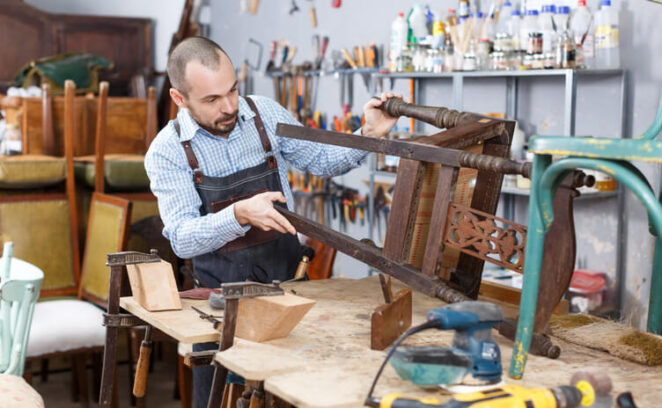
For intricate or valuable restoration projects, it is advisable to seek professional assistance. Choosing the right experts can make a significant difference in the outcome of the restoration process. Look for experienced restorers who specialize in the specific type of antique you wish to restore. Ask for recommendations, check their credentials, and inquire about their restoration techniques. A reputable restorer will have a deep understanding of historical materials and techniques, possess the necessary tools and facilities, and adhere to ethical standards.
Conclusion
In conclusion, antique restoration is a captivating art form that requires meticulous attention to detail, skillful techniques, and a deep understanding of historical materials. By following the key steps and techniques outlined in this blog post, you can embark on successful restoration projects and preserve the past for future generations. Remember to approach restoration with respect for the object’s historical value and authenticity, striking a balance between revival and preservation.
Whether it’s a beautiful piece of wooden furniture, a delicate painting, or a precious metal object, antique restoration allows us to celebrate the craftsmanship of the past and keep history alive.



